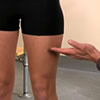 An expert committee of the National Osteoporosis Foundation (NOF) with a multi-specialty council of medical experts in the field of bone health have updated recommendations.
An expert committee of the National Osteoporosis Foundation (NOF) with a multi-specialty council of medical experts in the field of bone health have updated recommendations.
Let’s focus on prevention, which emphasizes many of the CAM topics that dominate this website.
Continue reading Updated recommendations to prevent and treat osteoporosis →
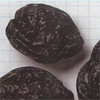 Among nutritional factors, dried plum (prunes; Prunus domestica L.) is most effective for preventing and reversing bone loss.
Among nutritional factors, dried plum (prunes; Prunus domestica L.) is most effective for preventing and reversing bone loss.
Researchers in Oklahoma and Florida examined the extent to which dried plum reverses bone loss in osteopenic postmenopausal women. Continue reading Benefits of prunes for postmenopausal women →
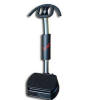 Animal studies show beneficial effects, but studies in postmenopausal women are conflicting.
Animal studies show beneficial effects, but studies in postmenopausal women are conflicting.
Researchers at Toronto, and McMaster University, in Hamilton, Ontario, studied whether whole body vibration improves bone density and structure. Continue reading Whole-body vibration therapy of bone →
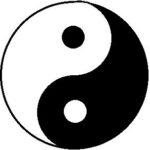 Prof. Ernst and a colleague critically evaluated the systematic reviews of tai chi for any improvement of medical conditions or clinical symptoms. Continue reading Reviewing the reviews of tai chi →
Prof. Ernst and a colleague critically evaluated the systematic reviews of tai chi for any improvement of medical conditions or clinical symptoms. Continue reading Reviewing the reviews of tai chi →
 Calcium supplements are widely used to help prevent osteoporosis but have been associated with a possible increase in the risk of adverse cardiovascular outcomes.
Calcium supplements are widely used to help prevent osteoporosis but have been associated with a possible increase in the risk of adverse cardiovascular outcomes.
Now, researchers from the UK and Denmark have presented an alternative view. Continue reading More on calcium supplements and the risk of cardiovascular disease →
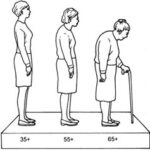 Several studies suggest that the response to bisphosphonates could in part be dependent on circulating blood levels of vitamin D.
Several studies suggest that the response to bisphosphonates could in part be dependent on circulating blood levels of vitamin D.
Researchers at Weill Cornell Medical College, in New York City, examined the association between blood levels of 25 hydroxy vitamin D [25(OH)D] and the response to bisphosphonate treatment. Continue reading Importance of vitamin D for bisphosphonate therapy →
 Fatty acids may be important dietary components that modulate osteoporotic fracture risk.
Fatty acids may be important dietary components that modulate osteoporotic fracture risk.
Researchers at The Ohio State University, Columbus, studied fatty acid intake in relation to osteoporotic fractures. Continue reading Fatty acids and the risk of fracture in women →
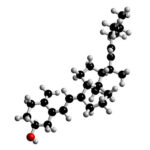 Research suggests that patients with schizophrenia treated with antipsychotics have low vitamin D blood levels and may have a higher risk of hip fractures in their later years than the general population.
Research suggests that patients with schizophrenia treated with antipsychotics have low vitamin D blood levels and may have a higher risk of hip fractures in their later years than the general population.
Researchers at Assistance Publique Hopitaux de Paris, in France, evaluated whether the vitamin D levels in adolescent psychiatric inpatients were lower than the 30 ng/mL recommended to protect against osteoporosis. Continue reading Vitamin D levels in adolescents with severe mental illness →
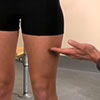 Quadriceps activation deficits (delayed muscle activation, see photo) are common in people with tibiofemoral (knee) osteoarthritis.
Quadriceps activation deficits (delayed muscle activation, see photo) are common in people with tibiofemoral (knee) osteoarthritis.
Researchers at the University of Toledo, in Ohio, studied transcutaneous electrical nerve stimulation (TENS) set to a sensory level and therapeutic exercise to increase quadriceps activation in people with tibiofemoral osteoarthritis. Continue reading TENS for people with osteoporosis →
 Researchers at Tung Wah Eastern Hospital, in Hong Kong, China, reviewed the evidence for CAM in the context of the overall treatment plan. Continue reading Status of treatment options for osteoporosis →
Researchers at Tung Wah Eastern Hospital, in Hong Kong, China, reviewed the evidence for CAM in the context of the overall treatment plan. Continue reading Status of treatment options for osteoporosis →
 Researchers in the US, UK, and Australia reviewed the evidence and tell us that taking calcium supplements without also taking vitamin D is associated with an increased risk of heart attack. Continue reading The risk of taking a calcium supplement without taking vitamin D →
Researchers in the US, UK, and Australia reviewed the evidence and tell us that taking calcium supplements without also taking vitamin D is associated with an increased risk of heart attack. Continue reading The risk of taking a calcium supplement without taking vitamin D →
 Type “naprapathy” into Google and — you guessed it, — you’re asked, Did you mean: Naturopathy?
Type “naprapathy” into Google and — you guessed it, — you’re asked, Did you mean: Naturopathy?
No…I meant N A P R A P A T H Y ? the stealthy CAM.
Continue reading Naprapathy →
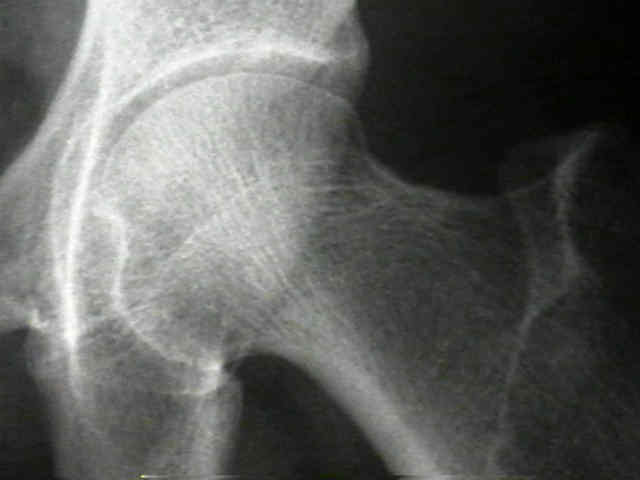 This Medscape review covers orthoses, exercise, calcium and vitamin D therapy, and kyphoplasty from an academic perspective. Continue reading Nonpharmacologic management of osteoporosis →
This Medscape review covers orthoses, exercise, calcium and vitamin D therapy, and kyphoplasty from an academic perspective. Continue reading Nonpharmacologic management of osteoporosis →
 The results from many studies in the past 2 years make it clear that current vitamin D guidelines aren’t sufficient, and we can’t rely on the sun to meet our daily requirements.
The results from many studies in the past 2 years make it clear that current vitamin D guidelines aren’t sufficient, and we can’t rely on the sun to meet our daily requirements.
Here are the latest recommendations from Osteoporosis Canada. Continue reading New vitamin D recommendations from Canada →
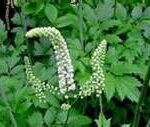 Researchers from the University of Erlangen, in Germany studied the effect of adding black cohosh (Cimicifuga racemosa) to exercise.
Researchers from the University of Erlangen, in Germany studied the effect of adding black cohosh (Cimicifuga racemosa) to exercise.
They were looking for evidence of greater benefit with black cohosh over exercise alone in bone mineral density and coronary heart disease risk during early post menopause. Continue reading The Training and Cimicifuega racemosa Erlangen study →
  For these healing disciplines where the interaction between therapist and patient are so closely entwined and it’s difficult to show consistent benefit over sham or placebo, I propose we stop testing these treatments.
 For these healing disciplines where the interaction between therapist and patient are so closely entwined and it’s difficult to show consistent benefit over sham or placebo, I propose we stop testing these treatments.
We would do better to test the therapists. Continue reading Stop testing Chinese and homeopathic treatments →
 In adults, vitamin D deficiency is associated with osteopenia, osteoporosis, muscle weakness, fractures, cancer, autoimmune diseases, infectious diseases and cardiovascular diseases. And adequate doses might reduce the risk of certain cancers and type 1 diabetes.
In adults, vitamin D deficiency is associated with osteopenia, osteoporosis, muscle weakness, fractures, cancer, autoimmune diseases, infectious diseases and cardiovascular diseases. And adequate doses might reduce the risk of certain cancers and type 1 diabetes.
The current recommendation of 5 mcg (200 IU) may be too little, according to researchers in Maine and South Carolina. Continue reading Searching for the correct dose of vitamin D →
 The Harvard Women’s Health Watch has published recommendations to lower the risk of fractures due to osteoporosis.
The Harvard Women’s Health Watch has published recommendations to lower the risk of fractures due to osteoporosis.
I supplemented their recommendations with references. Continue reading Recommendations from Harvard for bone health →
 Yes, yes, yes, it was October 20th, and I missed it.
Yes, yes, yes, it was October 20th, and I missed it.
But here’s a summary of CAM research on osteoporosis reported in 2008. Continue reading World osteoporosis day →
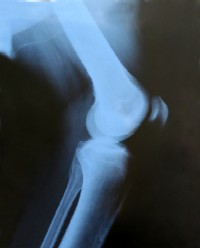 There are some small studies in patients, and now there’s a review that connects the clinical response and mechanisms of action of two species of cat’s claw (Uncaria tomentosa and Uncaria guianensis).
There are some small studies in patients, and now there’s a review that connects the clinical response and mechanisms of action of two species of cat’s claw (Uncaria tomentosa and Uncaria guianensis).
Here’s an example of what’s reported. Continue reading The status of cat’s claw to treat osteoporosis →
Complementary and Alternative Medicine: Fair, Balanced, and to the Point
 An expert committee of the National Osteoporosis Foundation (NOF) with a multi-specialty council of medical experts in the field of bone health have updated recommendations.
An expert committee of the National Osteoporosis Foundation (NOF) with a multi-specialty council of medical experts in the field of bone health have updated recommendations.







 Type “naprapathy” into Google and — you guessed it, — you’re asked, Did you mean: Naturopathy?
Type “naprapathy” into Google and — you guessed it, — you’re asked, Did you mean: Naturopathy? This Medscape
This Medscape 
  For these healing disciplines where the interaction between therapist and patient are so closely entwined and it’s difficult to show consistent benefit over sham or placebo, I propose we stop testing these treatments.
 For these healing disciplines where the interaction between therapist and patient are so closely entwined and it’s difficult to show consistent benefit over sham or placebo, I propose we stop testing these treatments. In adults, vitamin D deficiency is associated with osteopenia, osteoporosis, muscle weakness, fractures, cancer, autoimmune diseases,
In adults, vitamin D deficiency is associated with osteopenia, osteoporosis, muscle weakness, fractures, cancer, autoimmune diseases,  The Harvard Women’s Health Watch has
The Harvard Women’s Health Watch has  There are some small studies in patients, and now there’s a review that connects the clinical response and mechanisms of action of two species of cat’s claw (Uncaria tomentosa and Uncaria guianensis).
There are some small studies in patients, and now there’s a review that connects the clinical response and mechanisms of action of two species of cat’s claw (Uncaria tomentosa and Uncaria guianensis).